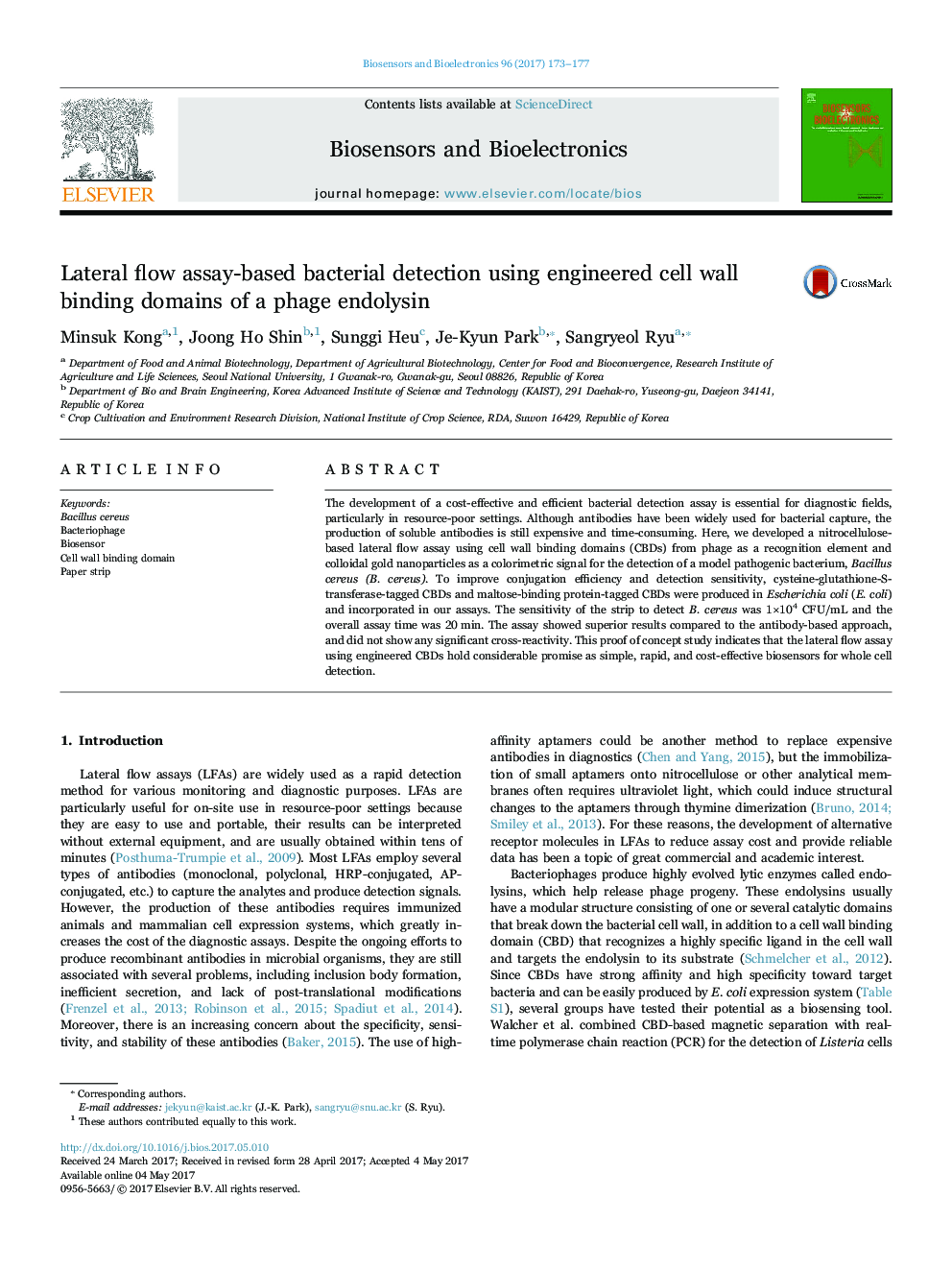| کد مقاله | کد نشریه | سال انتشار | مقاله انگلیسی | نسخه تمام متن |
|---|---|---|---|---|
| 5030853 | 1470936 | 2017 | 5 صفحه PDF | دانلود رایگان |
- The cell wall binding domain (CBD) of endolysin was tested for whole cell detection.
- A lateral flow assay using CBD as a recognition element was developed.
- The assay showed promising results for whole cell detection.
The development of a cost-effective and efficient bacterial detection assay is essential for diagnostic fields, particularly in resource-poor settings. Although antibodies have been widely used for bacterial capture, the production of soluble antibodies is still expensive and time-consuming. Here, we developed a nitrocellulose-based lateral flow assay using cell wall binding domains (CBDs) from phage as a recognition element and colloidal gold nanoparticles as a colorimetric signal for the detection of a model pathogenic bacterium, Bacillus cereus (B. cereus). To improve conjugation efficiency and detection sensitivity, cysteine-glutathione-S-transferase-tagged CBDs and maltose-binding protein-tagged CBDs were produced in Escherichia coli (E. coli) and incorporated in our assays. The sensitivity of the strip to detect B. cereus was 1Ã104 CFU/mL and the overall assay time was 20Â min. The assay showed superior results compared to the antibody-based approach, and did not show any significant cross-reactivity. This proof of concept study indicates that the lateral flow assay using engineered CBDs hold considerable promise as simple, rapid, and cost-effective biosensors for whole cell detection.
Journal: Biosensors and Bioelectronics - Volume 96, 15 October 2017, Pages 173-177
